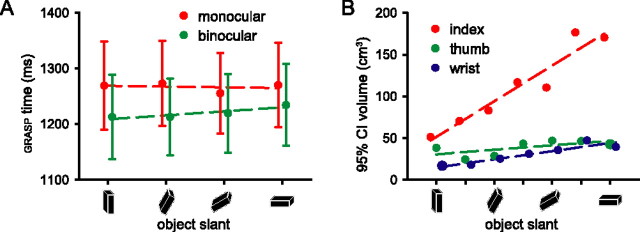Figure 2.
Behavioral effects. A, Collapsed reaction and prehension times (mean ± SE over subjects) were longer in trials with monocular (red) than in trials with binocular viewing conditions (green), but did not change as a function of object deviation from the vertical plane (0, 30, 60, or 90°). B, Volumes of the 95% confidence ellipsoids describing the end-point positions (taken 30 ms before the first touch with the object) of the index finger, thumb, and wrist as a function of object slant. The end-point variance was not significantly different for monocular and binocular trials.

